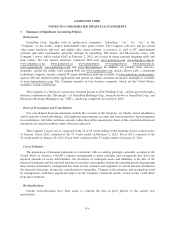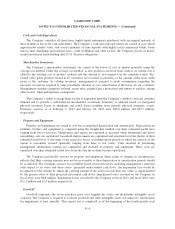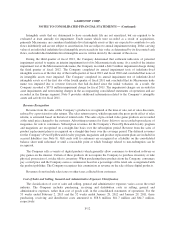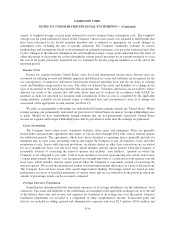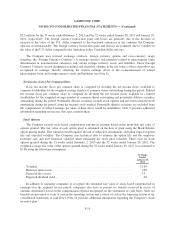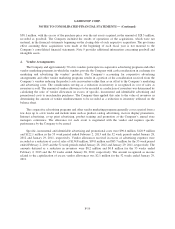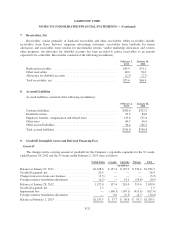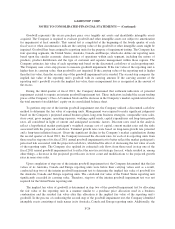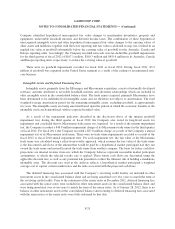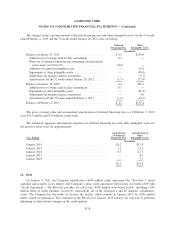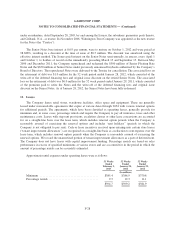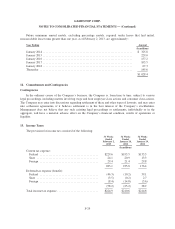GameStop 2012 Annual Report Download - page 94
Download and view the complete annual report
Please find page 94 of the 2012 GameStop annual report below. You can navigate through the pages in the report by either clicking on the pages listed below, or by using the keyword search tool below to find specific information within the annual report.GAMESTOP CORP.
NOTES TO CONSOLIDATED FINANCIAL STATEMENTS — (Continued)
$38.1 million, with the excess of the purchase price over the net assets acquired, in the amount of $28.5 million,
recorded as goodwill. The Company included the results of operations of the acquisitions, which were not
material, in the financial statements beginning on the closing date of each respective acquisition. The pro forma
effect assuming these acquisitions were made at the beginning of each fiscal year is not material to the
Company’s consolidated financial statements. Note 9 provides additional information concerning goodwill and
intangible assets.
4. Vendor Arrangements
The Company and approximately 50 of its vendors participate in cooperative advertising programs and other
vendor marketing programs in which the vendors provide the Company with cash consideration in exchange for
marketing and advertising the vendors’ products. The Company’s accounting for cooperative advertising
arrangements and other vendor marketing programs results in a portion of the consideration received from the
Company’s vendors reducing the product costs in inventory rather than as an offset to the Company’s marketing
and advertising costs. The consideration serving as a reduction in inventory is recognized in cost of sales as
inventory is sold. The amount of vendor allowances to be recorded as a reduction of inventory was determined by
calculating the ratio of vendor allowances in excess of specific, incremental and identifiable advertising and
promotional costs to merchandise purchases. The Company then applied this ratio to the value of inventory in
determining the amount of vendor reimbursements to be recorded as a reduction to inventory reflected on the
balance sheet.
The cooperative advertising programs and other vendor marketing programs generally cover a period from a
few days up to a few weeks and include items such as product catalog advertising, in-store display promotions,
Internet advertising, co-op print advertising, product training and promotion at the Company’s annual store
managers conference. The allowance for each event is negotiated with the vendor and requires specific
performance by the Company to be earned.
Specific, incremental and identifiable advertising and promotional costs were $90.4 million, $120.9 million
and $122.1 million in the 53 week period ended February 2, 2013 and the 52 week periods ended January 28,
2012 and January 29, 2011, respectively. Vendor allowances received in excess of advertising expenses were
recorded as a reduction of cost of sales of $134.8 million, $99.0 million and $83.7 million for the 53 week period
ended February 2, 2013 and the 52 week periods ended January 28, 2012 and January 29, 2011, respectively. The
amounts deferred as a reduction in inventory were $8.2 million and $0.8 million for the 53 weeks ended
February 2, 2013 and the 52 weeks ended January 28, 2012, respectively. The amount recognized as income
related to the capitalization of excess vendor allowances was $2.1 million for the 52 weeks ended January 29,
2011.
F-19


